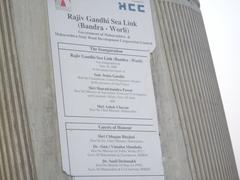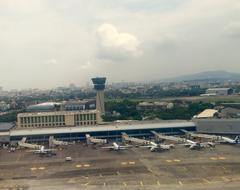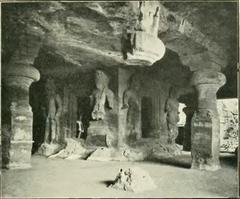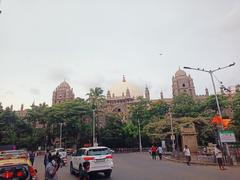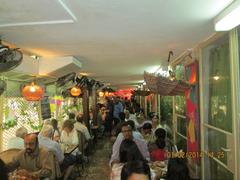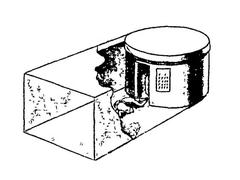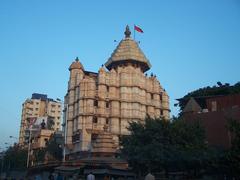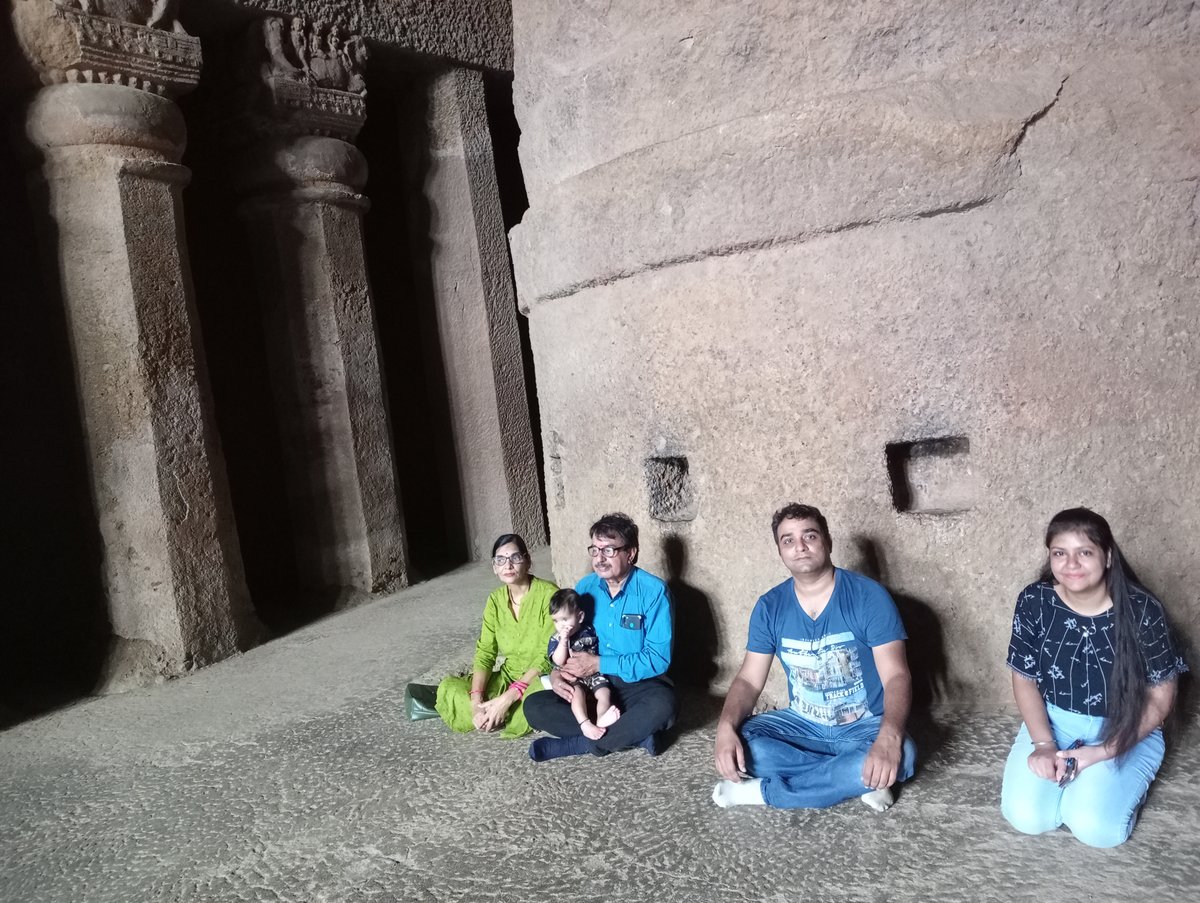
Kanheri Caves Visitor Guide
Date: 18/07/2024
Introduction
Nestled in the heart of Mumbai’s Sanjay Gandhi National Park, the Kanheri Caves offer a remarkable journey through India’s ancient Buddhist heritage. This collection of over 100 rock-cut caves, dating from the 1st century BCE to the 10th century CE, serves as a significant testament to the region’s rich spiritual and cultural past. The Kanheri Caves were more than mere shelters; they were thriving monastic complexes where Buddhist monks meditated, lived, and taught. Their intricate carvings, stupas, and inscriptions provide a window into the evolution of Buddhist art and architecture over centuries. Visiting the Kanheri Caves is not just a trip to an archaeological site but an immersive experience into the lives and spiritual pursuits of ancient monks. This comprehensive guide aims to provide you with all the essential information to plan your visit, including key attractions, visitor tips, and historical insights. Embark on this journey to explore one of Mumbai’s most fascinating historical sites and deepen your appreciation for India’s Buddhist legacy.
Table of Contents
- Introduction
- A Journey Through Time - Unveiling the History of Kanheri Caves
- Visitor Information
- Unique Features
- Key Attractions and Features
- Essential Tips for a Rewarding Visit
- FAQ
- Conclusion
A Journey Through Time - Unveiling the History of Kanheri Caves
The Dawn of a Monastic Legacy (1st Century BCE - 5th Century CE)
The story of the Kanheri Caves begins around the 1st century BCE, during a period when Buddhism flourished in western India. The earliest excavations, modest in scale, reflect the Hinayana tradition of Buddhism, which emphasizes individual enlightenment. These initial caves, primarily viharas (monasteries) for resident monks, were simple in design, consisting of rock-cut chambers for living and meditation.
Expansion and Transformation (5th Century CE - 10th Century CE)
As Buddhism evolved and the Mahayana tradition, with its focus on compassion and helping others achieve enlightenment, gained prominence, the Kanheri Caves underwent a significant transformation. This period, spanning from the 5th to the 10th centuries CE, witnessed a surge in the caves’ expansion and architectural complexity. Grander chaitya grihas (prayer halls) with intricate carvings and towering pillars were hewn from the basalt rock, showcasing the evolving artistic sensibilities. Cave No. 3, the most impressive of the chaitya grihas, stands as a magnificent example of this era, its vaulted ceilings and ornate columns reflecting the grandeur of Buddhist architecture.
Patronage and Prosperity
The Kanheri Caves flourished under the patronage of various rulers and wealthy merchants who recognized their religious and cultural significance. The cave walls bear witness to this generosity, with inscriptions in Brahmi and Devanagari scripts recording donations and commemorating patrons. These inscriptions provide invaluable insights into the social and economic fabric of the time, revealing the names of guilds, traders, and even royalty who contributed to the caves’ development.
A Thriving Center of Learning and Spirituality
Beyond their religious function, the Kanheri Caves evolved into a renowned center of Buddhist learning and scholarship. Monks from distant lands flocked to this secluded sanctuary, drawn by its serene atmosphere and the opportunity to study Buddhist scriptures and engage in philosophical discourse. The caves’ strategic location on an ancient trade route further facilitated the exchange of ideas and knowledge, making it a vibrant hub of intellectual and spiritual activity.
Decline and Rediscovery (11th Century CE Onwards)
With the decline of Buddhism in India and the rise of other religions, the Kanheri Caves gradually fell into disuse. The once-thriving monastic complex was reclaimed by nature, its magnificent sculptures and inscriptions hidden beneath layers of vegetation and earth. It was not until the arrival of Portuguese explorers in the 16th century that the caves were rediscovered and brought back to light. However, it was only in the 19th century, under the British Raj, that systematic efforts were undertaken to study, document, and preserve this invaluable heritage site.
The Enduring Legacy of Kanheri
Today, the Kanheri Caves stand as a poignant reminder of India’s rich Buddhist past. They offer a glimpse into the lives of the monks who dedicated themselves to spiritual pursuits and the artistry of those who transformed bare rock into intricate works of art. As you wander through the cool, echoing chambers, let the silence speak to you, transporting you back in time to an era of profound faith and artistic brilliance.
Visitor Information
Visiting Hours and Ticket Prices
The Kanheri Caves are open to visitors from 7:30 AM to 5:00 PM daily. The entry ticket price for Indian citizens is INR 15, while foreign tourists can access the site for INR 200. An additional fee is required for vehicle entry into the Sanjay Gandhi National Park.
Travel Tips and Nearby Attractions
The caves are located within the Sanjay Gandhi National Park, which is well-connected by road and rail. Visitors can take a local train to Borivali station and then hire an auto-rickshaw or taxi to the park entrance. Nearby attractions include the Lion and Tiger Safari, the Tulsi Lake, and the Gandhi Tekdi.
Accessibility
The Kanheri Caves are partially accessible to visitors with mobility challenges. Some of the caves and pathways may be difficult to navigate due to uneven surfaces and steps.
Unique Features
Special Events and Guided Tours
Occasionally, the Archaeological Survey of India organizes guided tours and special events at the Kanheri Caves. These tours provide deeper insights into the history and significance of the site.
Photographic Spots
The Kanheri Caves offer numerous photographic opportunities, from the intricately carved pillars to the panoramic views of the surrounding forest. Early mornings and late afternoons provide the best lighting conditions for photography.
Key Attractions and Features
Cave 1 (The Great Chaitya)
This is the largest and most impressive cave in the complex, dating back to the 1st century BCE. It is a classic example of a chaitya griha, a prayer hall with a vaulted roof and a stupa at the end.
- The Stupa - The 6-meter high stupa is the focal point of the cave, representing the Buddha’s presence.
- Columns - 34 massive pillars line the hall, each intricately carved with Buddhist motifs.
- Sculptures - The cave is adorned with sculptures depicting scenes from the life of Buddha, including his birth, enlightenment, and death.
Cave 3 (Chaitya Cave)
Another significant chaitya hall, Cave 3, dates back to the 1st century CE. It is smaller than Cave 1 but equally impressive in its architectural design.
- Facade - The cave’s entrance features a beautifully carved facade with sculptures of Buddha and Bodhisattvas.
- Wooden Beams - Interestingly, the cave retains remnants of its original wooden beams, a rarity in ancient cave architecture.
Cave 11 (Avalokiteshvara Cave)
This cave, dating back to the 5th century CE, is dedicated to Avalokiteshvara, the Bodhisattva of compassion.
- Central Image - The cave features a colossal 7-meter high sculpture of Avalokiteshvara, a masterpiece of Gupta-era art.
- Surrounding Sculptures - The central image is surrounded by smaller sculptures of other Bodhisattvas and Buddhist deities.
Cave 12 (The Monastery)
This cave is a well-preserved example of a Buddhist monastery, or vihara, with individual cells for monks.
- Layout - The cave has a central hall surrounded by 12 cells, each with stone beds and pillows carved out of the rock.
- Dining Hall - A separate chamber served as a dining hall, indicating the communal living style of the monks.
Cave 34 (The Paintings Cave)
This cave is notable for its rare surviving Buddhist murals, which offer valuable insights into the artistic traditions of the time.
- Mural Subjects - The paintings depict scenes from the Jataka tales, stories of Buddha’s previous lives.
- Color Palette - Despite centuries of exposure, the murals retain traces of their original vibrant colors.
Cave 41 (The Thousand Buddhas)
This cave gets its name from the numerous Buddha images carved into its walls, believed to represent the thousand Buddhas of the Bhadrakalpa.
- Variety of Images - The Buddha images vary in size and posture, showcasing different mudras (hand gestures) and expressions.
- Meditative Atmosphere - The sheer number of Buddha images creates a serene and meditative atmosphere within the cave.
Cave 90 (The Latest Cave)
This cave, dating back to the 9th or 10th century CE, is believed to be the latest addition to the Kanheri Caves complex.
- Unfinished State - The cave is unfinished, providing a glimpse into the cave-carving techniques used by the ancient artisans.
- Historical Significance - The cave’s late date suggests that the Kanheri Caves remained an active Buddhist site for centuries.
Other Notable Features
Beyond the individual caves, the Kanheri Caves complex offers other attractions:
- Water Cisterns - The complex features over 100 water cisterns, showcasing the advanced water management system developed by the monks.
- Views and Nature - Situated within the Sanjay Gandhi National Park, the caves offer panoramic views of the surrounding forest and the city beyond.
- Hiking Trails - Visitors can enjoy scenic hikes through the park, exploring the natural beauty surrounding the caves.
Essential Tips for a Rewarding Visit
- Allocate Sufficient Time - Dedicate at least half a day to fully explore the Kanheri Caves and soak in their historical and spiritual aura.
- Start Early - Arriving early in the morning allows you to avoid crowds and enjoy the tranquility of the surroundings.
- Carry Essentials - Bring along water bottles, snacks, and sunscreen, especially if visiting during the day.
- Respectful Attire - As a place of religious significance, dress modestly when visiting the caves.
- Comfortable Footwear - Be prepared for a bit of walking and climbing. Wear comfortable shoes suitable for uneven terrain.
- Guided Tours - Enhance your experience by opting for a guided tour. Local guides offer valuable insights into the history, architecture, and significance of the caves.
FAQ
What are the Kanheri Caves?
The Kanheri Caves are a group of ancient rock-cut caves located in Mumbai’s Sanjay Gandhi National Park. They served as a Buddhist monastic complex and center of learning from the 1st century BCE to the 10th century CE.
How do I get to the Kanheri Caves?
Visitors can take a local train to Borivali station and then hire an auto-rickshaw or taxi to the Sanjay Gandhi National Park entrance. From there, it is a short drive or walk to the caves.
What are the visiting hours and ticket prices for the Kanheri Caves?
The Kanheri Caves are open from 7:30 AM to 5:00 PM daily. The entry ticket price is INR 15 for Indian citizens and INR 200 for foreign tourists.
Are there guided tours available at the Kanheri Caves?
Yes, guided tours are available and recommended for a more informative experience.
What is the best time to visit the Kanheri Caves?
The best time to visit is from November to February when the weather is cooler.
Conclusion
The Kanheri Caves offer a captivating journey through India’s Buddhist history. As you explore these ancient monastic dwellings, you will gain a deeper appreciation for the spiritual and artistic achievements of the past. Plan your visit today and explore one of Mumbai’s most remarkable historical sites. For more information and updates, download the Audiala mobile app or follow us on social media.

